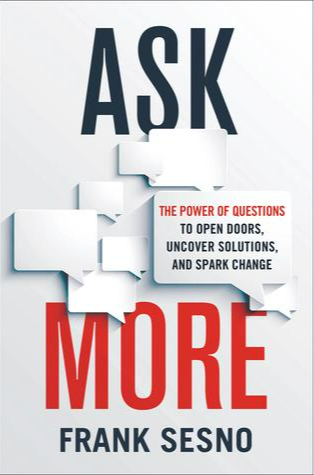5 Smart Study Skills You Need to Learn

Amazingly, we obsess over our students’ grades and academic performance and yet, we never really teach them how to study – neither at home nor at school. Academic success comes down to having effective study skills.
Online tutors at CrunchGrade have helped thousands of K-12 students across Australia and they recommend the following strategies to help them enhance their learning experience:
- Repetition Variation and Spacing: Repetition variation is a technique to repeat the study material with slight variations to prevent ‘wear out’ and optimize the effectiveness of study sessions. Different ways to revise what you have studied may include:
- Interleaving: This means mixing up different topics during your study sessions instead of focusing on just one.
- Retrieval practice: This is a method where you regularly quiz yourself on the material to help you remember it better.
- Elaborative rehearsal: This involves explaining the material to yourself or someone else in your own words. A great way to see if you really understand something is to try and teach it to someone else. This will also help solidify the information in your own mind.
- Using visual aids: Our brain processes visuals 60,000 times faster than text. So try to find or create visual representations of the material you are studying. This could be in the form of diagrams, charts, concept maps or mind maps.
- Making Connections: Our brain loves making connections and associations. So when we learn something new, try to come up with connections it has to things we already know. This will help the information ‘stick’ better in your mind.

Relate new material to what you have already learned by linking it to a previous topic, concept or experience.
- Create mnemonic devices: These are acronyms, rhymes or other memory tricks that can help you remember information better. For example, the acronym ‘VIBGYOR’ is used to help remember the order of colors in a rainbow (Violet, Indigo, Blue, Green, Yellow, Orange, Red).
- Connect the material to your own life: Think about how the material can be applied to your own life and experiences. This can make it more relevant and interesting for you.
- Make use of analogy: Analogies are a great way to help explain difficult concepts by comparing them to something more familiar. For example, ‘The planets revolve around the sun like cars on a racetrack.’
Spaced repetitions mean studying material over set intervals of time. This ensures that the information is continually being revised and helps embed it in your long-term memory. Try using apps like Anki or Quizlet to create digital flashcards that you can access on your phone or computer. Or you can make your own physical flashcards to carry around with you.
Spaced repetition is based on the concept known as the ‘forgetting curve. This means that we tend to forget information quickly after learning it if we don’t revise it. So, it’s important to gradually increase the intervals between revisions as you become more confident with the material.
The forgetting curve can be used to create a revision timetable. For example, if you have a test in two weeks, you would need to revise the material twice a day in the week leading up to it. Then reduce the number of times you revise it in the days leading up to the test.
There is no one-size-fits-all study method and what works for one person may not work for another. So, it’s important to find out what strategies work best for you and experiment with different techniques to see what works best.
1. Study while Sleeping: Studies show that you can still absorb information and learn new things while you sleep. So, if you want to learn something new, try revising just before you go to bed. This could be in the form of reading over your notes or listening to a recording of the material.

Other ways to keep studying while catching some sleep are:
2. Auditory cues during sleep spindles help with memory consolidation: Sleep spindles mean short bursts of brain activity that occur during sleep. They occur during the non-REM (Rapid Eye Movement) phase of the sleep cycle. These spindles are linked with memory consolidation, which is the process of learning and storing information in your memory. Listening to auditory cues (like someone reading out your notes) during sleep spindles may help you remember information better.
3. You can condition your mind or make associations during sleep: This means linking the information you want to learn with something that is already stored in your memory. Scientists found that odours and auditory cues (like a person reading out your notes) can be used to condition the mind and help with memory formation. So, try conditioning your mind to learn new information by pairing it with a smell.
4. You can learn new words, and their meanings, and get familiarized with the tone and accent of a language during sleep: Researchers have found that people can learn new vocabulary while sleeping. So, if you’re trying to learn a new language, try listening to audio recordings of the material before you go to sleep. You may also find it helpful to listen to audio recordings with a native speaker’s accent.
There’s one downside to learning during sleep though. Using these techniques may disrupt your quality of sleep. So, if you’re finding it hard to sleep at night, you may want to try another study method.
1. Determine Your Homework Profile:
When it comes to homework, some students prefer to work on assignments as soon as they get them. Others wait until the last minute. And some procrastinate and never seem to get their homework done.
CrunchGrade tutors can help you identify your homework profile depending on your experiences. This step is quite useful for students as they can learn about tools, resources and strategies they can use to be more productive and remain on top of their coursework.
2. Use Study Guides Effectively: Study guides are usually created by teachers to help students understand the key concepts and topics covered in a class. They can also be used to prepare for exams. However, many students don’t use study guides effectively.
You can try having multiple copies of the study guide at hand. Create your own guide by taking notes while you’re reading the textbook or listening to lectures. You can use the second copy of the study guide to test yourself and make sure that you understand the material.
You can cut the third copy of the study guide to create instant flash cards. These can be used to test your knowledge on the go. If you’re studying for an exam, make sure to use all three copies of the study guide to help you prepare effectively.
3. Body Multiplier (Group Work): This is a technique that can be used when working on group projects. It involves dividing the work among group members and then each member completes their assigned tasks independently.
Once all the tasks are completed, the group comes back together to discuss the results. This technique is effective as it allows each member to focus on their strengths and complete their tasks more efficiently. It also encourages open communication and collaboration among group members.
The above are five of the most effective study skills that CrunchGrade tutors recommend. But remember, it’s important to find out what works best for you and to tailor your studying methods accordingly. Good luck!
